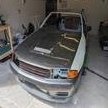Boosting Up Advice
Announcements
-
Similar Content
-
Latest Posts
-
Neoman1995 did the diodes to trick ecu code 44 and 46 work? With the diodes really need to.knowthanks in advance
-
Hello guys did anyone sort this issue Neoman1995 did respond if his voltage at certain pins tricked the ecu im havn the same problem need to no if it worked tricking the ecu
-
Woot! My diff is done! I just need to finish doing a wheel bearing while the exhaust and shaft is out of the way, pick it up and hopefully put it in next weekend!
-







Recommended Posts
Create an account or sign in to comment
You need to be a member in order to leave a comment
Create an account
Sign up for a new account in our community. It's easy!
Register a new accountSign in
Already have an account? Sign in here.
Sign In Now